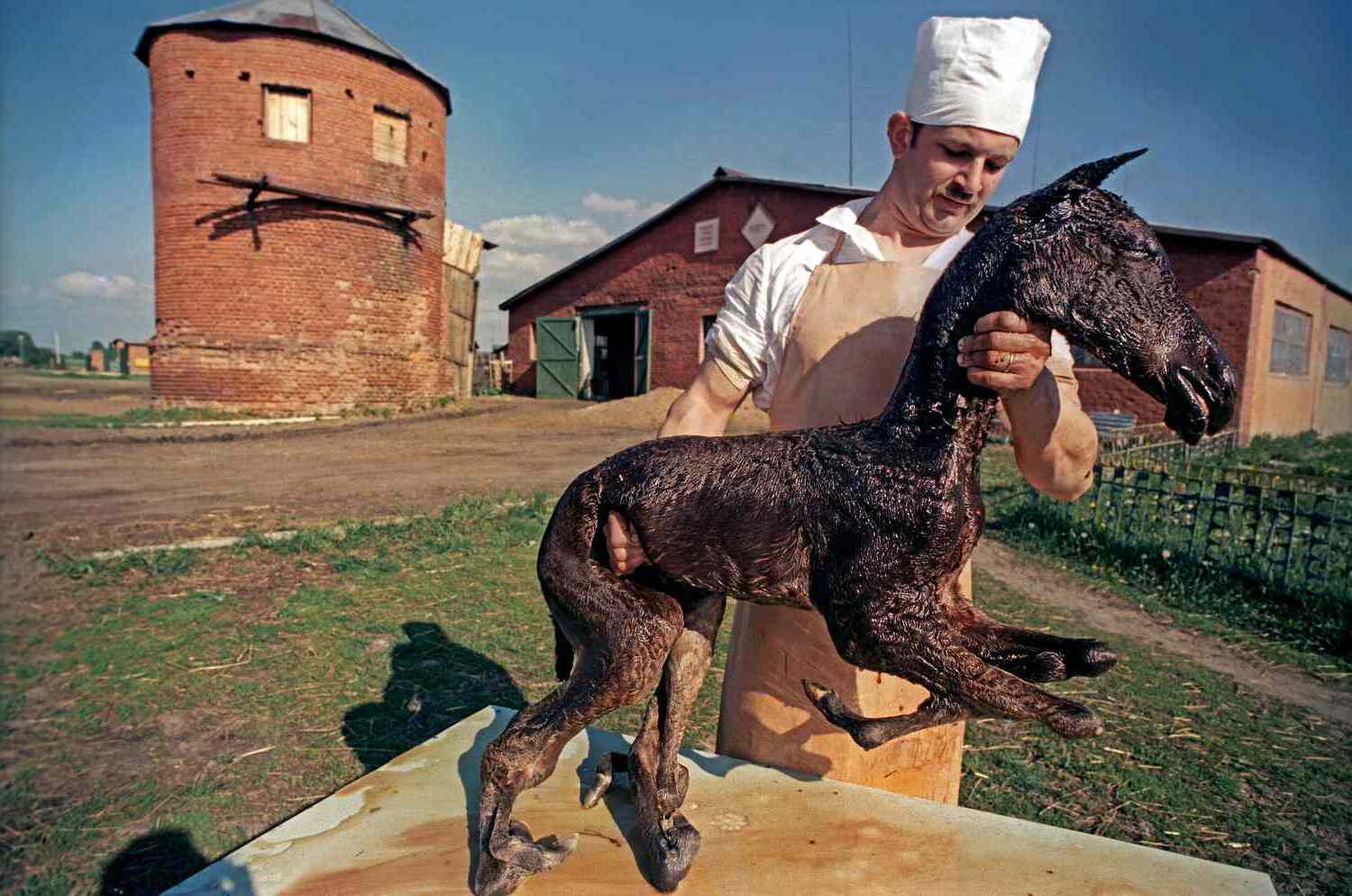
What happened to the animals in Chernobyl after the disaster? The Chernobyl disaster in 1986 left a lasting impact on the environment, including the wildlife. Surprisingly, many animals have adapted to the radioactive zone. Wolves, boars, and even Przewalski's horses now roam freely in the area. Some species have shown mutations, while others appear unaffected. Birds, insects, and mammals all face unique challenges but continue to thrive in unexpected ways. This introduction will delve into 38 fascinating facts about these resilient creatures, shedding light on their lives in one of the most infamous places on Earth.
Key Takeaways:
- Chernobyl's wildlife has thrived despite the disaster, with wolves, horses, and eagles making a comeback. Nature's resilience offers hope for the recovery of other contaminated areas.
- The absence of humans in Chernobyl has led to unique animal behaviors and genetic adaptations. This showcases nature's ability to restore balance and thrive in challenging environments.
Chernobyl's Wildlife Resurgence
After the Chernobyl disaster in 1986, the area was abandoned by humans, leading to a unique resurgence of wildlife. Despite the radiation, many species have thrived in the exclusion zone.
-
Wolves: The wolf population in the Chernobyl exclusion zone is seven times higher than in surrounding areas. Without human interference, these predators have flourished.
-
Przewalski's Horses: These rare horses were introduced to the zone in the 1990s. They have adapted well, with their population steadily increasing.
-
Eagles: White-tailed eagles, once rare in the region, have made a strong comeback. They benefit from the abundance of prey and lack of human disturbance.
-
Bears: Brown bears, previously absent from the area, have returned. They roam freely, taking advantage of the rich, undisturbed habitat.
Radiation's Impact on Animals
Radiation has had varying effects on different species. Some have shown remarkable resilience, while others have experienced significant changes.
-
Birds: Many birds in the zone have smaller brains compared to those in non-contaminated areas. This is likely due to the radiation's impact on their development.
-
Insects: Some insect populations, like bees and butterflies, have declined. Radiation affects their reproduction and survival rates.
-
Rodents: Mice and voles have adapted to the radiation. Studies show they have developed mechanisms to repair DNA damage caused by radiation.
-
Fish: Fish in the Pripyat River show higher levels of radiation. Despite this, they continue to thrive, indicating some level of adaptation.
Unique Animal Behaviors
The absence of humans has led to some fascinating changes in animal behavior within the Chernobyl exclusion zone.
-
Elk: Elk have become more diurnal, meaning they are active during the day. This change likely results from the lack of human presence.
-
Bats: Bats in the zone have altered their roosting habits. They now prefer buildings abandoned by humans, which offer safe, undisturbed shelters.
-
Boars: Wild boars have taken over abandoned villages. They use the structures for shelter and forage in the overgrown gardens.
Genetic Mutations and Adaptations
Radiation has caused genetic mutations in some species, leading to unique adaptations and changes.
-
Frogs: Some frogs in the zone have darker skin. This pigmentation may offer protection against radiation.
-
Plants: Certain plants have developed thicker leaves. This adaptation helps them survive in the contaminated soil.
-
Birds: Some birds have developed higher levels of antioxidants. These help them combat the harmful effects of radiation.
Conservation Efforts and Studies
Scientists continue to study Chernobyl's wildlife, providing valuable insights into the effects of radiation and the resilience of nature.
-
Monitoring: Researchers use camera traps to monitor animal populations. This non-invasive method helps track the health and behavior of various species.
-
Genetic Studies: DNA analysis of animals in the zone reveals how they adapt to radiation. These studies could inform conservation strategies for other contaminated areas.
-
Reintroduction Programs: Efforts to reintroduce species like the European bison have been successful. These programs help restore the natural balance of the ecosystem.
Surprising Species in Chernobyl
Some unexpected species have been found thriving in the Chernobyl exclusion zone, showcasing nature's resilience.
-
Lynx: These elusive cats have been spotted in the zone. Their presence indicates a healthy, balanced ecosystem.
-
Otters: Otters have returned to the rivers and streams. They benefit from the clean, undisturbed waterways.
-
Beavers: Beavers have built dams throughout the zone. Their activities create wetlands, which support diverse plant and animal life.
-
Bison: European bison, reintroduced to the area, have adapted well. Their population continues to grow, contributing to the biodiversity of the zone.
The Future of Chernobyl's Wildlife
The long-term effects of radiation on Chernobyl's wildlife remain uncertain. However, the current resurgence offers hope for the resilience of nature.
-
Research: Ongoing studies will help understand the full impact of radiation. These findings could guide future conservation efforts.
-
Protection: The exclusion zone serves as a de facto wildlife sanctuary. Continued protection of this area is crucial for the survival of its unique inhabitants.
-
Education: Chernobyl's wildlife story educates the world about the impacts of human activity. It highlights the importance of preserving natural habitats.
-
Tourism: Controlled tourism in the zone raises awareness. Visitors learn about the disaster's impact and the remarkable recovery of wildlife.
-
Collaboration: International collaboration is essential for studying and protecting Chernobyl's wildlife. Shared knowledge benefits global conservation efforts.
Fascinating Animal Encounters
Visitors and researchers in the Chernobyl exclusion zone have reported some incredible animal encounters.
-
Foxes: Friendly foxes often approach humans. They have become accustomed to the occasional presence of researchers and tourists.
-
Moose: Moose sightings are common. These large herbivores thrive in the lush, undisturbed forests.
-
Birdwatching: The zone is a birdwatcher's paradise. Rare and endangered species can be observed in their natural habitat.
-
Insect Diversity: Despite radiation, the zone hosts a wide variety of insects. This diversity supports the entire ecosystem.
The Role of Predators
Predators play a crucial role in maintaining the balance of Chernobyl's ecosystem. Their presence indicates a healthy environment.
-
Wolves: As apex predators, wolves control the populations of other animals. Their presence ensures a balanced ecosystem.
-
Lynx: Lynx help regulate the populations of smaller mammals. This balance supports the overall health of the ecosystem.
-
Birds of Prey: Eagles and hawks keep rodent populations in check. Their hunting activities contribute to the stability of the ecosystem.
The Resilience of Nature
Chernobyl's wildlife resurgence is a testament to nature's resilience. Despite the challenges, life finds a way to thrive.
-
Adaptation: Many species have adapted to the radiation. These adaptations showcase the incredible resilience of nature.
-
Biodiversity: The exclusion zone supports a wide range of species. This biodiversity is crucial for the health of the ecosystem.
-
Natural Balance: Without human interference, nature has restored its balance. Predators and prey coexist in a stable environment.
-
Hope: Chernobyl's wildlife offers hope for other contaminated areas. It demonstrates the potential for recovery and renewal.
-
Inspiration: The story of Chernobyl's animals inspires conservation efforts worldwide. It reminds us of the importance of protecting our natural world.
The Last Word on Chernobyl Animals
Chernobyl's wildlife has shown incredible resilience. Despite the radiation, animals like wolves, boars, and birds have adapted to their environment. Mutations and health issues do occur, but many species thrive in the absence of humans. This unique ecosystem offers valuable insights into nature's ability to recover from disasters. Scientists continue to study these animals, hoping to understand the long-term effects of radiation. Their findings could help us better protect wildlife in other contaminated areas.
Chernobyl remains a powerful reminder of both human error and nature's strength. The animals living there today are a testament to survival against the odds. As we learn more about their lives, we gain a deeper appreciation for the resilience of life on Earth. So, next time you hear about Chernobyl, remember the animals that call it home and their incredible stories of adaptation.
Frequently Asked Questions
Was this page helpful?
Our commitment to delivering trustworthy and engaging content is at the heart of what we do. Each fact on our site is contributed by real users like you, bringing a wealth of diverse insights and information. To ensure the highest standards of accuracy and reliability, our dedicated editors meticulously review each submission. This process guarantees that the facts we share are not only fascinating but also credible. Trust in our commitment to quality and authenticity as you explore and learn with us.


